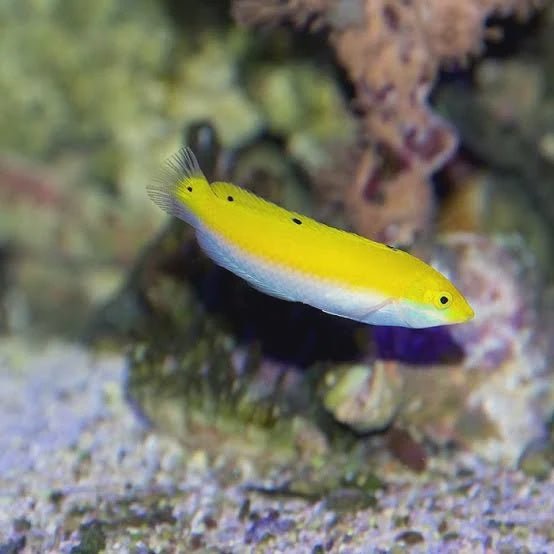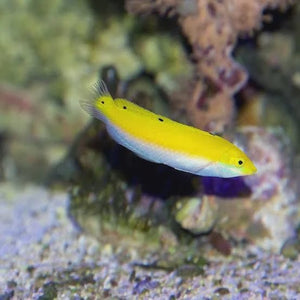
While we make every effort to ensure that our online stock levels are accurate and up to date, some products—particularly those that are perishable or subject to daily changes—may vary in availability. This includes livestock, fish, corals, and both fresh and frozen foods. Due to the nature of these items and their dependence on factors such as shipment schedules, health status, and in-store demand, availability can change rapidly and may not always be reflected in real time on our website.
To avoid disappointment, we strongly encourage customers to confirm the availability of these products before placing an order or visiting In-Store. You can do this easily by using the "Ask a Question" tab on the product page or by calling us directly on 0460 961 696 .
Our friendly team will be happy to assist and provide the most up-to-date information on current stock.

Flashy, fast, and full of character, the Three Spot Wrasse (Halichoeres trimaculatus) is a highly active reef wrasse named for the distinctive black spots found on its dorsal region. Known for its dazzling green-to-yellow body and perpetual motion, this Indo-Pacific native adds colour and energy to larger marine systems. As with many wrasses, it’s a hardy and useful addition—offering both visual appeal and natural pest control.
Species: Halichoeres trimaculatus
Common Names: Three Spot Wrasse, Tripletail Wrasse, Yellow Wrasse (juvenile stage)
Origin: Indo-Pacific – from East Africa to Australia, including the Great Barrier Reef
Light Requirements: Moderate to high
Diet: Carnivorous – feeds on bristle worms, small crustaceans, and prepared marine foods such as mysis shrimp, krill, enriched pellets, and chopped seafood
Maximum Size: 18–20 cm
Temperament: Semi-aggressive
Care Level: Intermediate
Aquarium Setup:
Best housed in marine aquariums of at least 300 litres, with a sandy substrate (for burrowing) and ample live rock for foraging and shelter. This species is known to dive into sand beds at night or when startled, so a soft sand base is essential. Secure rockwork and moderate flow will mimic its natural reef habitat. They’re jumpers—a tight-fitting lid is mandatory.
Water Parameters:
Temperature: 24–27°C
pH: 8.1–8.4
Salinity: 1.023–1.025
Alkalinity: 8–12 dKH
Calcium: 400–450 ppm
Magnesium: 1250–1350 ppm
Growth and Maintenance:
Three Spot Wrasses are relatively hardy and long-lived when provided with clean, well-oxygenated water and a varied, protein-rich diet. They play an active role in pest control by eating unwanted invertebrates and parasites. Like many wrasses, their colour intensifies with maturity, and they may shift appearance significantly from juvenile to adult stages.
Care Tips:
✔ Provide fine sand for burrowing – essential for rest and stress relief
✔ Feed a mixed, meaty diet 2–3 times daily
✔ Use a secure lid – known escape artists
✔ Avoid housing with small ornamental invertebrates
✔ Allow plenty of swimming space – very active species
Compatibility:
Best kept with semi-aggressive to bold tankmates like tangs, larger clownfish, angelfish, and other wrasses. Avoid shy or slow-moving species. May prey on small crustaceans (like cleaner shrimp) and snails, so not 100% reef-safe.
Availability:
Occasionally available in the Australian marine trade. Juveniles often display more yellow, while adults take on a green or bluish tint with defined spotting. Ask us about availability, sizing, and reef compatibility options.
Disclaimer:
"While beautiful and active, the Three Spot Wrasse is not recommended for tanks with small ornamental shrimp or delicate inverts. Sand substrate is essential for their health and natural behaviour."


